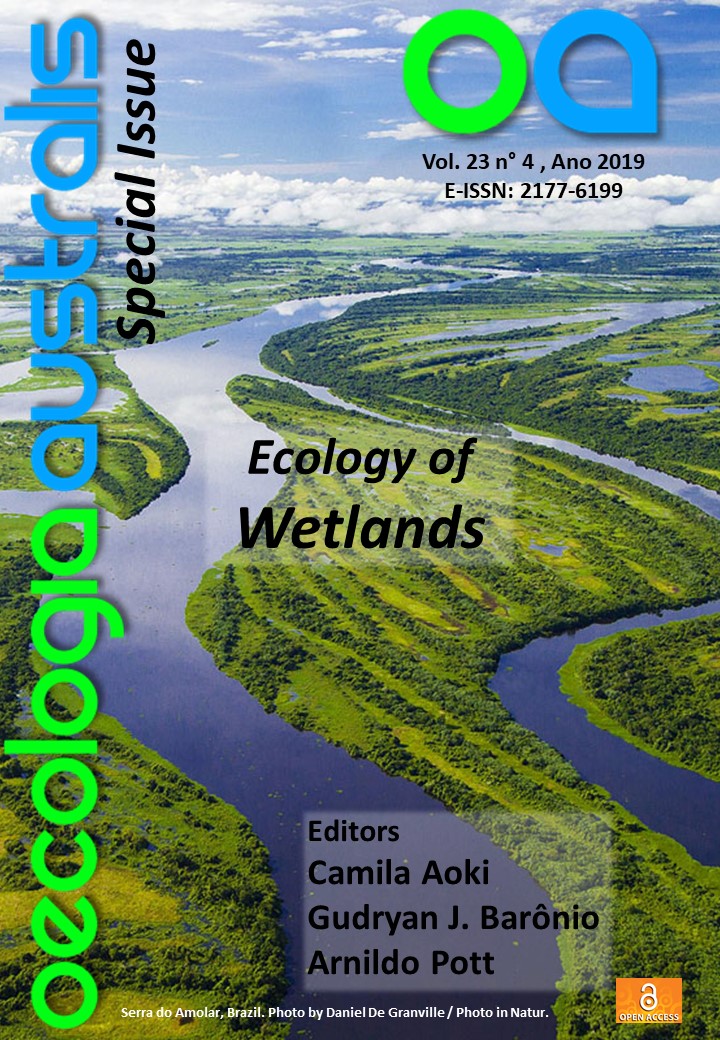Editorial: Special Issue on Ecology of Wetlands
Keywords:
wetlandsAbstract
Wetlands became a worldwide concern as a research topic for conservation and restoration, while in Brazil, the theme stays behind. This is a paradoxical contrast with our magnificent wetlands such as the Pantanal, Araguaia, Guaporé and many others. Wetlands continue to be damaged and even drained. The escalation of water shortage alone justifies more attention to our wetlands, being just one of the provided ecosystem services.
In this special issue on Ecology of Wetlands, we aimed to bring together updated scientific knowledge about several research topics, covering most wetland habitats of all Brazilian biogeographic domains and including all sorts of organisms, from microorganisms to flora and fauna. We became delighted by such great response and interest of many scientists and graduate students to publish their work here. We believe that Oecologia Australis contributed to meet a restrained demand. Thus, although there is yet a long way to go, this edition means a new benchmark contribution which makes us believe that the academic community well represents the wetland ecology in Brazil.
This edition includes one revision, 26 original articles and five short communications. The revision covered the main methods adopted for the analysis of the diet of fish assemblages in floodplains of Brazilian rivers (Corrêa & Smith). The articles encompass various ecosystems and distinct groups of the flora and the fauna diversity of wetlands. For the Pantanal, are presented palynological analyses showing the connectivity between rivers and lakes at late Pleistocene (Bezerra et al.); such as soil physical and chemical characteristics are correlated with landscape discontinuities and vegetation forms (Queiroz et al.). The edition also contains studies on several aspects of seed banks (Bao et al., Oliveira et al., and Souza et al.), aquatic macrophytes (Catian et al., Coutinho et al., and Santana et al.), phytoplankton (Loverde-Oliveira & Huszar), invertebrates (Aranda & Ie, Carvalho et al., and Prado et al.), fish (Santos et al. and Súarez et al.) and birds (Godoi et al.). About Veredas, this fascicle brings vario us information upon their floristic elements (Arantes et al., Moreira et al., and Pott et al.), the fauna of Odonata (Rodrigues et al.) and Anura (Sousa et al.). Also in this special issue, are contemplated diverse aspects of other wetlands, such as Humid Chaco (Bortolotto et al. and Santos et al.) and mangrove (Batista-da-Silva et al.). We hope that this selection of documents is useful to support new studies and incentive the biological understanding and the conservation of wetlands.


